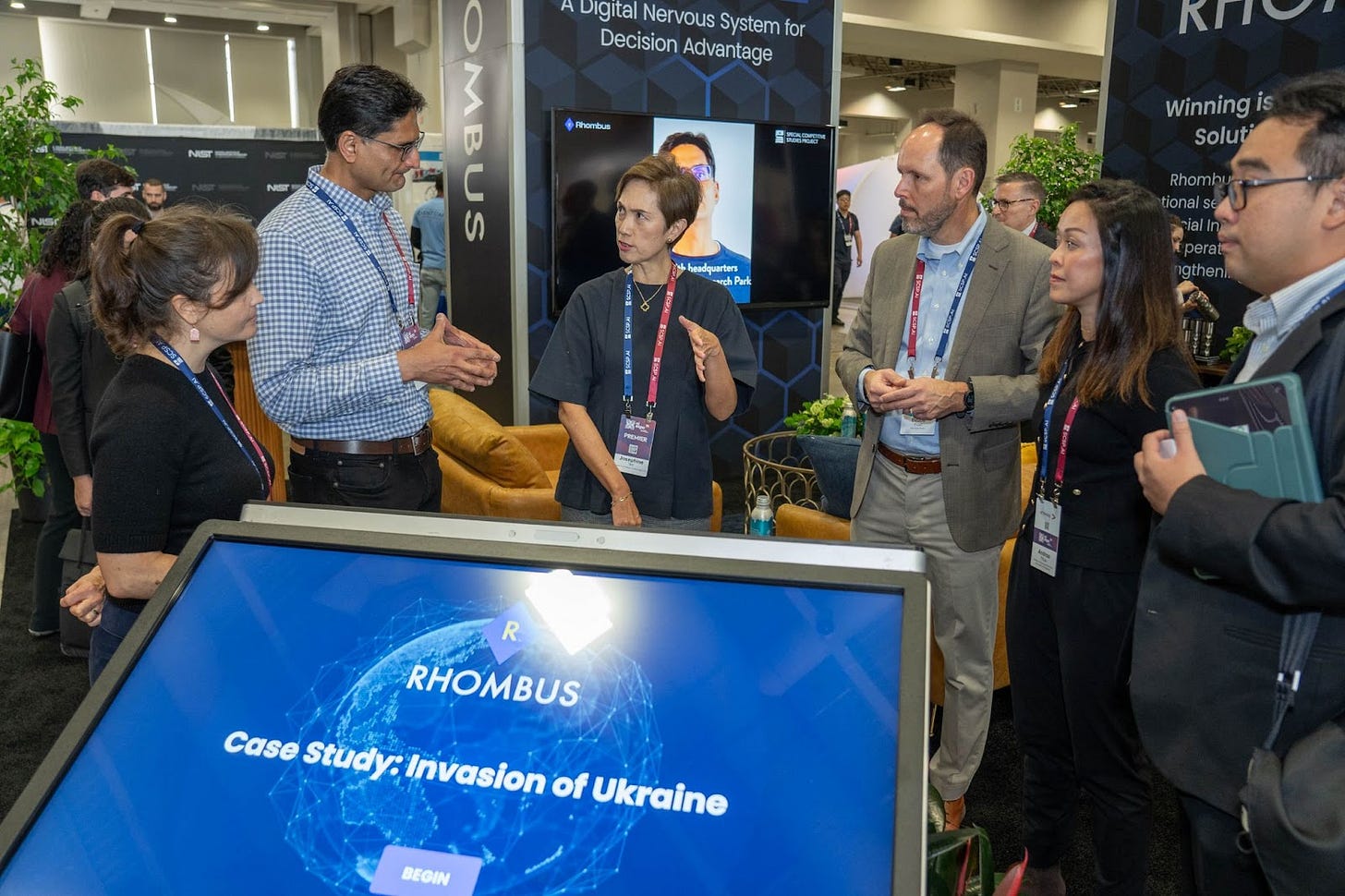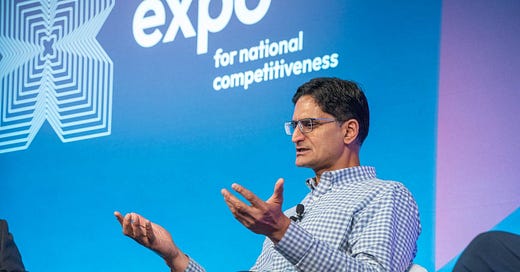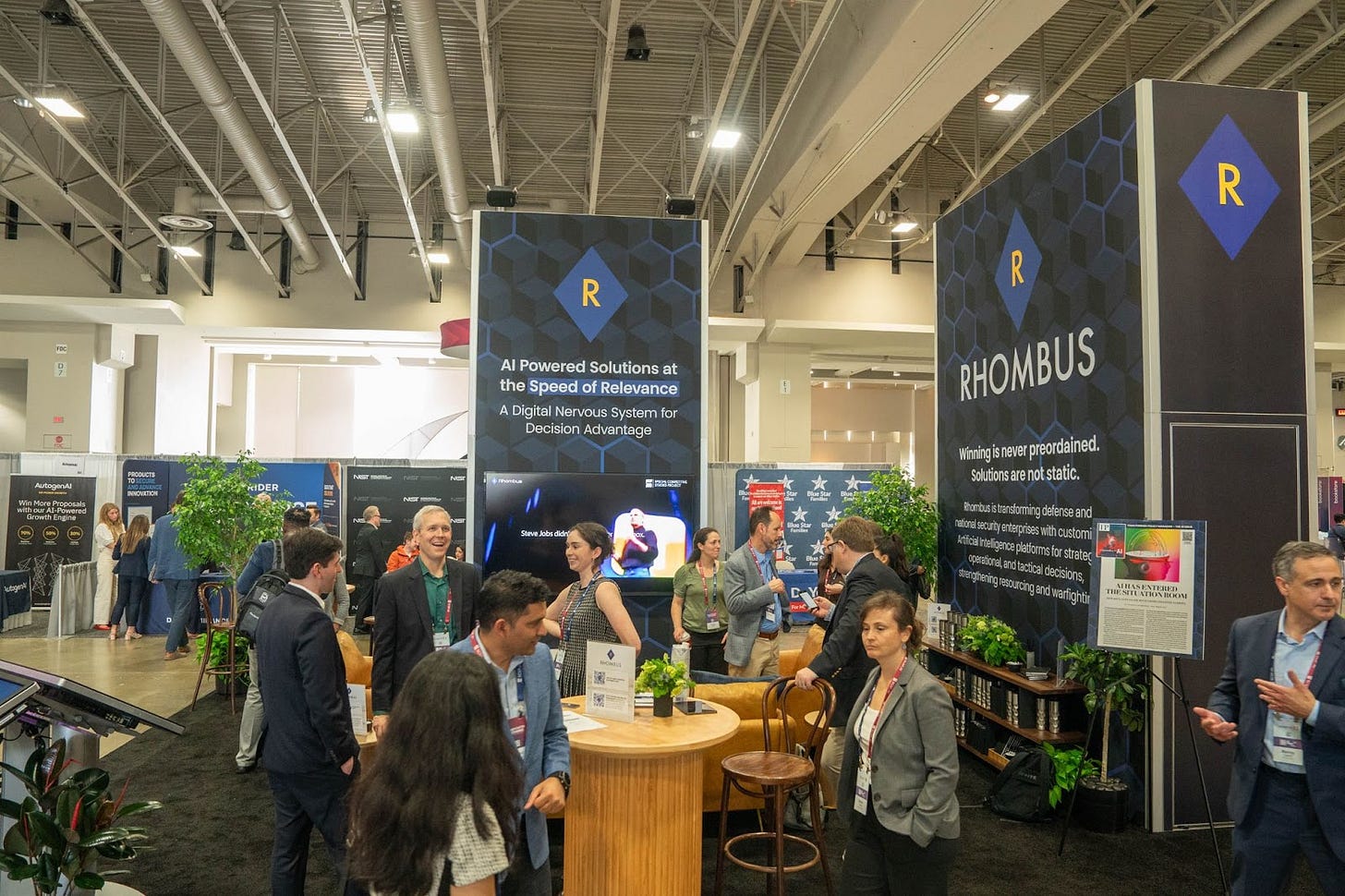Special Guest Edition: Rhombus Power Founder Anshu Roy on Today's Engineers of Victory
Hello, I’m Ylli Bajraktari, CEO of the Special Competitive Studies Project. In this special edition of SCSP’s newsletter, and four days until we gather for the SCSP AI+ Expo, I’m pleased to share a timely reflection from Anshu Roy, Founder of Rhombus Power, Inc, the lead sponsor of this year’s expo.
Below Anshu connects Memorial Day, the anniversary of D-Day, and the promise of AI to underscore a powerful truth: victory is engineered through preparation. In today’s strategic competition, decision superiority—powered by AI—is our edge.
His essay is both a tribute to history and a call to act now. The future isn’t coming. It’s already here. Check out my prior conversation with Anshu Roy on key issues related to national security, including the potential for predictive technologies to support more timely and informed decisions.
Make sure to join SCSP at the upcoming AI+ Expo, June 2-4, 2025 in Washington DC! This premier event will feature over 300+ speakers, a defense exchange, hackathon, drone arena, bookstore, ai+careers stage, live podcast recordings and so much more. I hope to see you there.
Today’s Engineers of Victory
We are hours away from the SCSP AI+ Expo, a few days after Memorial Day, and a week ahead of the 81st Anniversary of D-Day, the Normandy Invasion.
These three historical markers each have great meaning. As a CEO of a company serving the national security enterprise with AI-powered predictive decision support in real-time, Memorial Day is a sober reminder of the privilege of supporting those who give all in our defense.
And as a history buff, I remain in awe of D-Day: the young people who waded into the bloody surf to liberate a continent, and leaders who plotted and planned with decisiveness and daring.
But as a PhD, my mind comes back again and again to a book I read which underscores that D-Day would not have been possible without unsung, often forgotten work years in advance.
Paul Kennedy’s "Engineers of Victory: The Problem Solvers Who Turned the Tide in the Second World War" tells the story of innovative problem-solving by engineers, soldiers, scientists, and entrepreneurs from 1943-1945. It surfaces little known but critical operational-level choices which all proved pivotal to countering German U-boats, gaining air superiority, and executing the Normandy invasion.
I find this hidden history fascinating for many reasons, one of which is its simple affirmation of Sun Tzu’s premise in Art of War: battles are won before they start. Preparation is everything. In our AI Age, this is especially critical; the point of “too late” arrives sooner than ever before, which is why this year’s Expo focus on “delivering” is so important.
But the book’s other point that resonates today is just as powerful: seemingly small decisions enable bigger decisions.
Spoiler-alert: it wasn’t just The Manhattan Project. It was many, individual enterprises which in aggregate made victory possible, including streamlined, empowered organizational structures that ensured resources and personnel could be deployed effectively in the field.
All of which is why, as we think about how to ensure strength at home and victory in the competition with China, it is key to think about AI not just as a game-changing strategic battlefield, but as a practical tool to make every decision faster and more informed.

At home, AI-powered decision support is critical to everything from stopping Fentanyl and illicit drugs from entering the United States, to detecting wildfires before they become conflagrations engulfing communities, to tracking transnational criminal organizations and forecasting supply chain disruptions to enable smarter logistics.
Geopolitical advantage now hinges on an important edge: decision superiority. The winner in this era isn’t necessarily the one with the most weapons or even the most data—it’s the one who can understand the battlespace clearer, anticipate the opponent's moves sooner, and act faster and more precisely than anyone else.
We owe the intelligence community and the military’s decision-makers the full spectrum opportunity to deploy AI applications to improve everyday outcomes today, not science fiction for a far-flung future.
AI-powered decision support tools can make the work we already do better, and it can also unlock new horizons of possibility.
We know the nature of our chief competitor. Through synchronized action across diplomatic, informational, economic, and military domains—bolstered by state-directed tech innovation, grey zone tactics, and a vast population—Beijing represents a fundamentally new kind of threat. It’s not just the scale of their ambition, but the structure of their approach: integrated, fast-moving, and strategic. This is not a threat we can confront with outdated tactics or siloed systems.
The good news is, we have a better way. Up and down the chain of command, we need to be using AI today, not waiting for tomorrow.
In fact, national security planners are using AI to aggregate early indicators to warn decision-makers about gathering threats, much earlier than in the past.
Already today, everyone can access AI tools in ways relevant to every combatant command and every desk in the Pentagon. AI-powered decision advantage applications are revolutionizing how the Air Force, for example, makes investment decisions, jettisoning Excel spreadsheets and PowerPoints, and saving thousands of computational hours. It isn’t just making the budgeting process quicker, it’s radically reshaping its quality, giving senior leaders more scenarios to compare and contrast in record time, enabling smarter decisions.
Tomorrow is even more promising: we’ve talked in the run-up to the Expo, for example, about how new tools can help address threats to critical infrastructure and undersea cables in a way that revolutionizes solutions that have literally been stagnant since the Spanish American War.
Knowing that a tool is available and relevant is half the battle. Victory arrives in overcoming cultural barriers that stand in the way of adoption. Tools depend on leaders insisting they be integrated. The demand signal must come from the top, building a culture of accountability for its use and measurement. Only those who communicate again and again that they do not want to do the same thing the same way over and over again will reap the benefits.
Instead of making AI unapproachable, we need to do the opposite and provide proper context. Technology always changes warfighting, and crisis has always accelerated adoption. Lincoln Laboratory grew rapidly out of the World War II radar labs America had built at MIT to shape the future of defense. Necessity really was the mother not just of innovation, but of adoption.
Once fully integrated into the modern workflow, AI will become indispensable, and implicit in all we do. It will enable existing processes to be more efficient through access to very large amounts of data otherwise impossible to evaluate. Intelligence functions are emblematic; human interaction in the process remains critical, but AI can evaluate enormous quantities of government and commercial, open-source and classified, data all at once to focus available analyst bandwidth on the most valuable inputs.
We do everyone up and down the chain of command a favor if we stop talking about fantastical futures around mythical AI solutions, and instead focus on the here and now, in ways that are relevant. Don’t wait for the AI Age – it’s already here. Now is the moment to make the most of it. China isn’t waiting. Neither can we.






